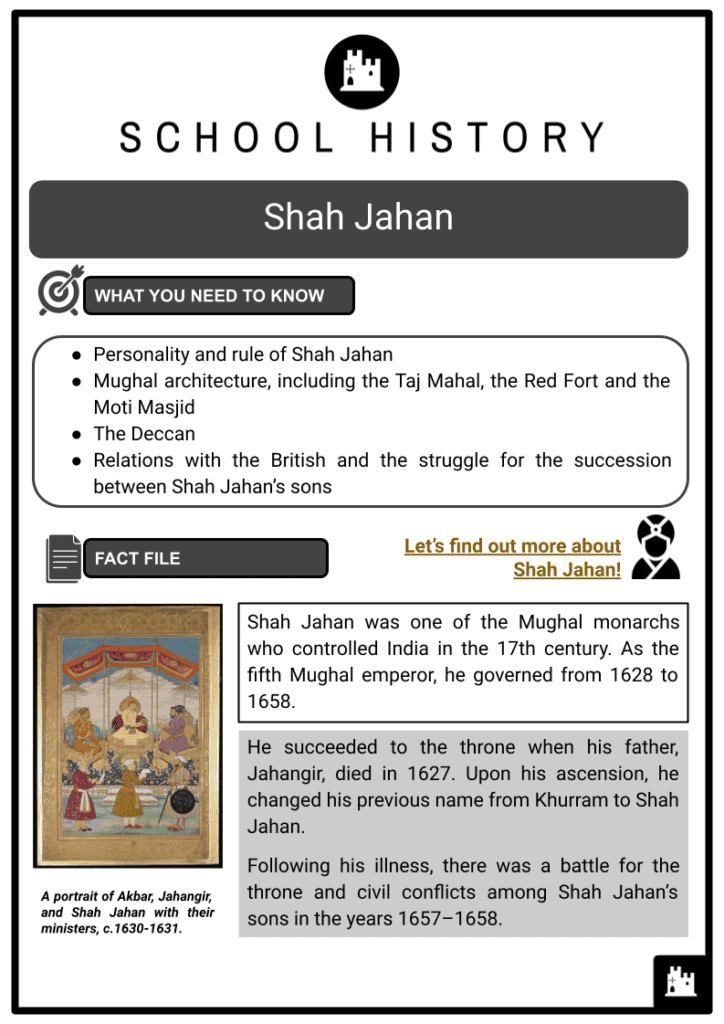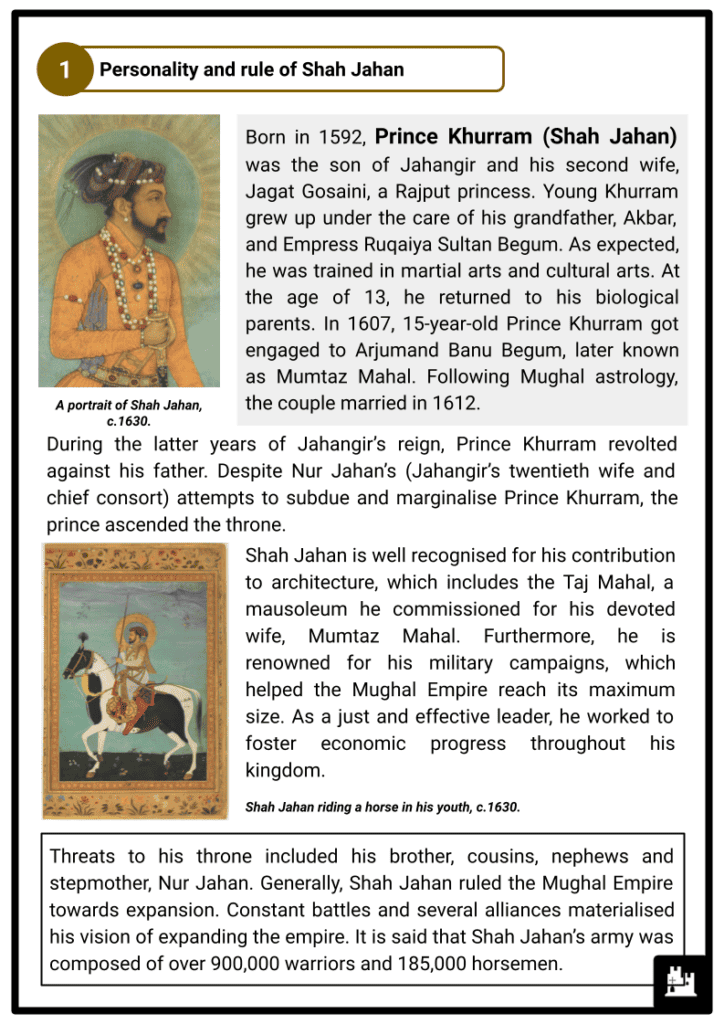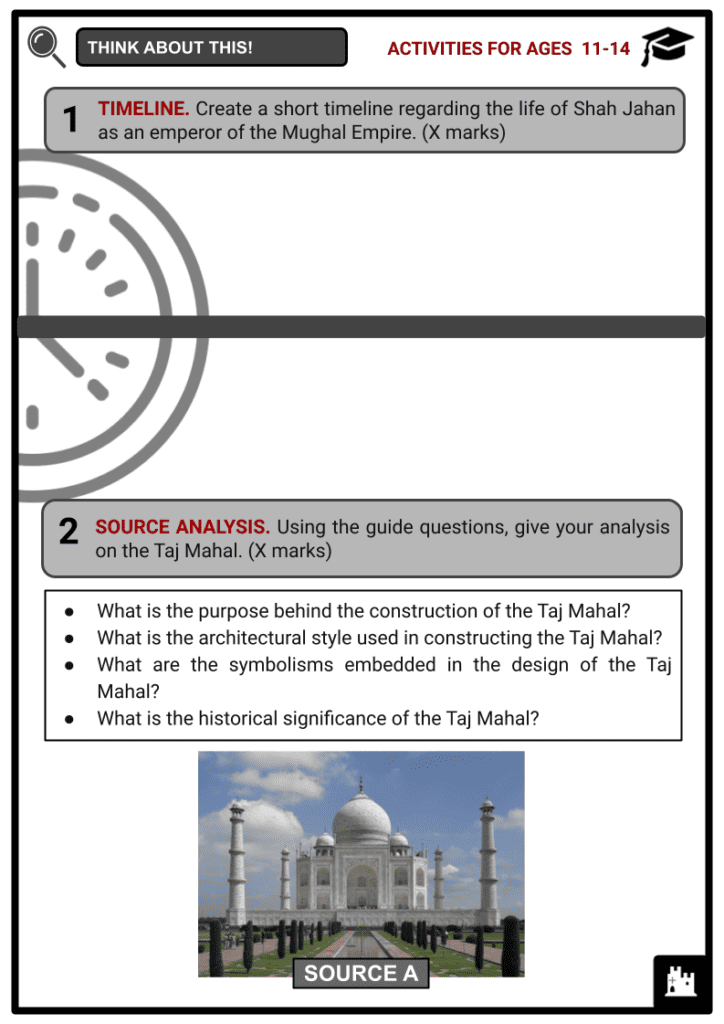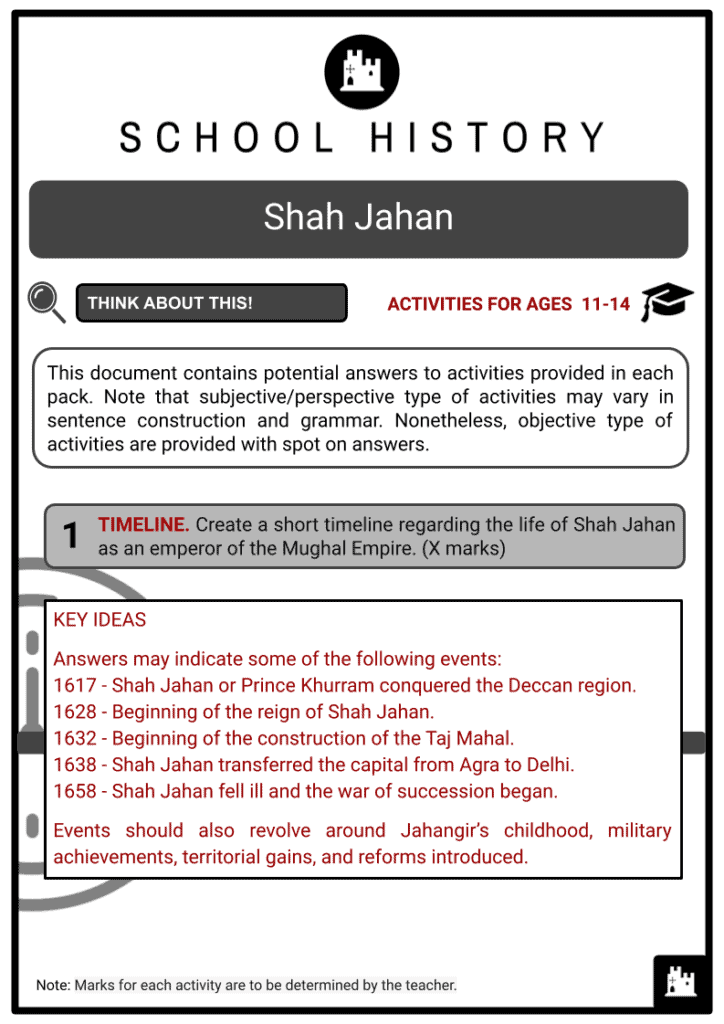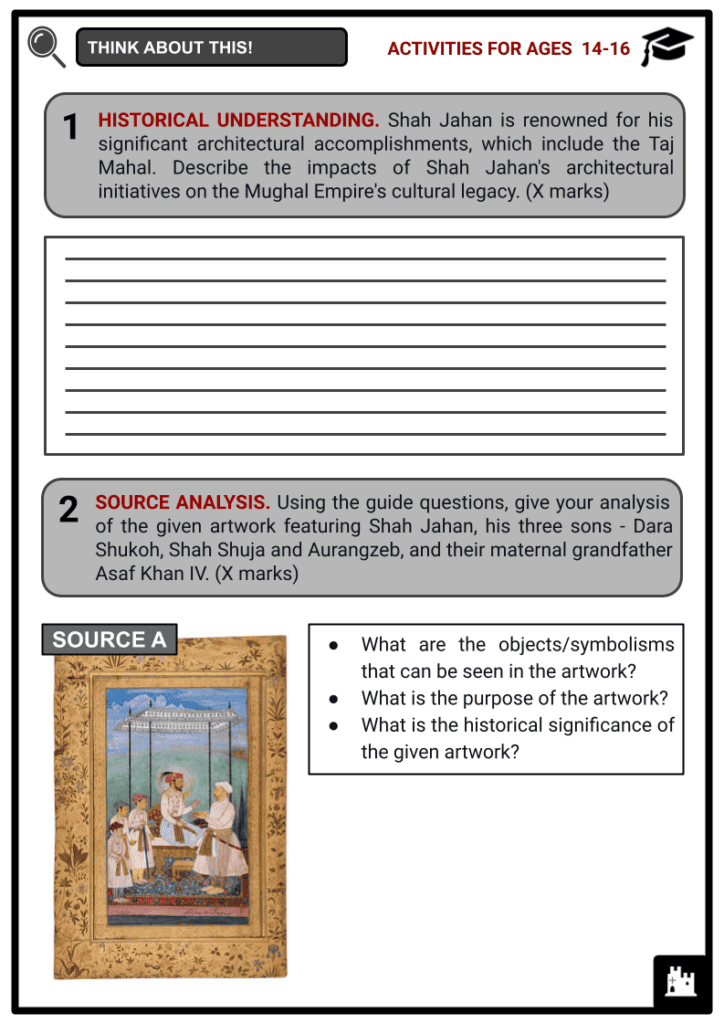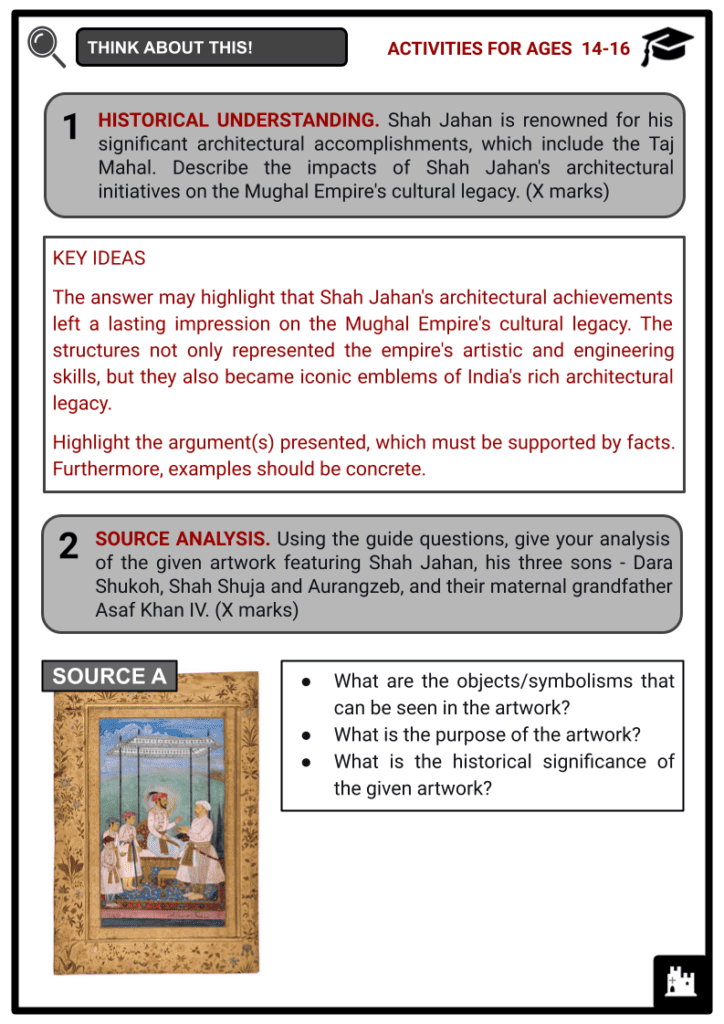Shah Jahan Worksheets
Do you want to save dozens of hours in time? Get your evenings and weekends back? Be able to teach about Shah Jahan to your students?
Our worksheet bundle includes a fact file and printable worksheets and student activities. Perfect for both the classroom and homeschooling!
Summary
- Personality and rule of Shah Jahan
- Mughal architecture, including the Taj Mahal, the Red Fort and the Moti Masjid
- The Deccan
- Relations with the British and the struggle for the succession between Shah Jahan’s sons
Key Facts And Information
Let’s find out more about Shah Jahan!
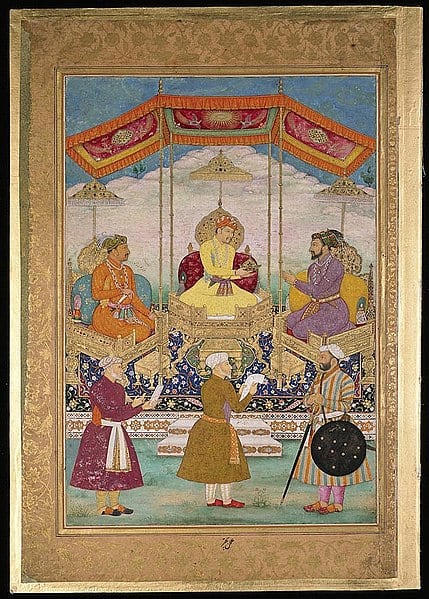
Shah Jahan was one of the Mughal monarchs who controlled India in the 17th century. As the fifth Mughal emperor, he governed from 1628 to 1658. He succeeded to the throne when his father, Jahangir, died in 1627. Upon his ascension, he changed his previous name from Khurram to Shah Jahan. Following his illness, there was a battle for the throne and civil conflicts among Shah Jahan’s sons in the years 1657–1658.
Personality and rule of Shah Jahan
- Born in 1592, Prince Khurram (Shah Jahan) was the son of Jahangir and his second wife, Jagat Gosaini, a Rajput princess. Young Khurram grew up under the care of his grandfather, Akbar, and Empress Ruqaiya Sultan Begum. As expected, he was trained in martial arts and cultural arts. At the age of 13, he returned to his biological parents. In 1607, 15-year-old Prince Khurram got engaged to Arjumand Banu Begum, later known as Mumtaz Mahal. Following Mughal astrology, the couple married in 1612.
- During the latter years of Jahangir’s reign, Prince Khurram revolted against his father. Despite Nur Jahan’s (Jahangir’s twentieth wife and chief consort) attempts to subdue and marginalise Prince Khurram, the prince ascended the throne.
- Shah Jahan is well recognised for his contribution to architecture, which includes the Taj Mahal, a mausoleum he commissioned for his devoted wife, Mumtaz Mahal. Furthermore, he is renowned for his military campaigns, which helped the Mughal Empire reach its maximum size. As a just and effective leader, he worked to foster economic progress throughout his kingdom.
- Threats to his throne included his brother, cousins, nephews and stepmother, Nur Jahan. Generally, Shah Jahan ruled the Mughal Empire towards expansion. Constant battles and several alliances materialised his vision of expanding the empire. It is said that Shah Jahan’s army was composed of over 900,000 warriors and 185,000 horsemen.
- In contrast to his grandfather’s religious tolerance, Shah Jahan ordered the demolition of Hindu temples and Christian churches in 1632. While he adored Hindu festivals, he also encouraged mass conversion to Islam. Moreover, Portuguese settlements near Calcutta were also destroyed under his reign.
- Despite his tremendous achievements, Shah Jahan’s rule was also characterised by political unrest and a serious economic downturn. His court was characterised by extravagance and splendour due to his collection of jewels. Furthermore, he had to deal with various uprisings, including one led by Aurangzeb, his son, who overthrew him and ascended to the throne in 1658. Shah Jahan was imprisoned for the remainder of his life, the majority of it in the Agra Fort, until his demise in 1666.
- Shah Jahan carried on his father’s custom in which Persian culture and literature continued to have a significant effect on the Mughal court. The court and administration both spoke Persian, and many of the courtiers and officials did as well. Shah Jahan was also renowned for his support of Persian calligraphers, poets and artists, and he ordered several significant pieces of literature and art in the Persian language.
- In the Mughal court under Jahangir and Shah Jahan, court rituals played a significant role. The royal court was incredibly regimented, with stringent laws dictating everything from the courtiers’ dress to the layout of the seats. The Durbar, or formal audience, was one of the lavish court ceremonies that were used to display the Mughal Empire’s wealth and power.
- As petitioners and ambassadors from other kingdoms came to pay their respects and present gifts, the emperor would be seated on a throne with his courtiers and officials. The rites were often followed by feasts and other festivals and were accompanied by music, dance and other types of entertainment.
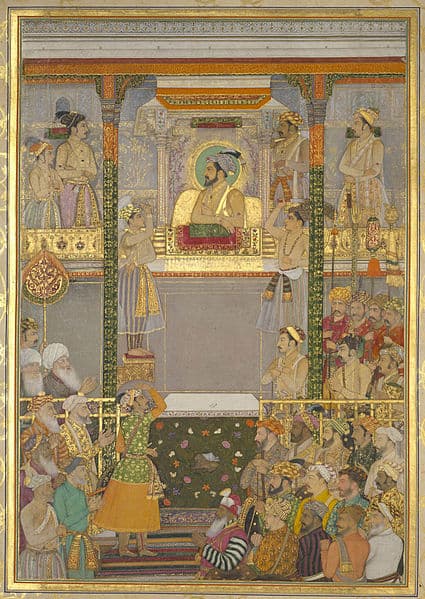
An image depicting Shah Jahan at his Durbar, the noble court, c.1657. - Shah Jahan likewise directed the creation of the Peacock Throne, embellished with 108 rubies, 116 emeralds, and rows of pearls.
- The cultural and political milieu of the Mughal Empire under Jahangir and Shah Jahan was significantly shaped by Persian influences and court rituals overall. The numerous architectural and artistic wonders that were produced during their reigns are still visible today as a testament to their heritage.
Mughal architecture, including the Taj Mahal, the Red Fort and the Moti Masjid
- The creation of several recognisable monuments during the reign of Shah Jahan that are still standing marked the peak of Mughal architecture. The Taj Mahal, the Red Fort and the Moti Masjid are a few of the most illustrious examples of Mughal architecture from this time.
Taj Mahal
- Mumtaz Mahal, Shah Jahan’s second wife and mother of 14 of his 16 children, died in 1631 while giving birth to their last child. He then ordered the construction of the Taj Mahal, a magnificent mausoleum, to commemorate his favourite queen.
- The Taj Mahal, which is regarded as one of the world’s greatest architectural masterpieces, is arguably the most well-known example of Mughal architecture. With its exquisite carvings, precious stones inlaid, and dazzling white marble exterior that appears to change colour with the light, the Taj Mahal is a stunning example of how Indian, Persian and Islamic architectural traditions can coexist harmoniously. A UNESCO World Heritage Site, the Taj Mahal welcomes millions of tourists each year.
- The tall doorways of the Taj Mahal were inscribed with texts from the Quran. Precious stones such as onyx, jasper, carbuncle, cornelian, malachite and lapis lazuli studded the mosaic, which is how it gained its name ‘A Dream in Marble’. Four smaller domes surround a central dome, while four slimmer towers, called ‘minarets’, are situated at the corners. Inside the mausoleum is a cenotaph or false tomb for Mumtaz Mahal, while the real sarcophagus of her remains is in the lower chamber.
- Directly across the structure is an identical building called a jawab, which means mirror. The construction began in 1632 and was completed in 1648. By 1653, additions of the outer courtyard and its cloisters were built. Ustad-Ahmad Lahori was the main architect of the Taj Mahal.
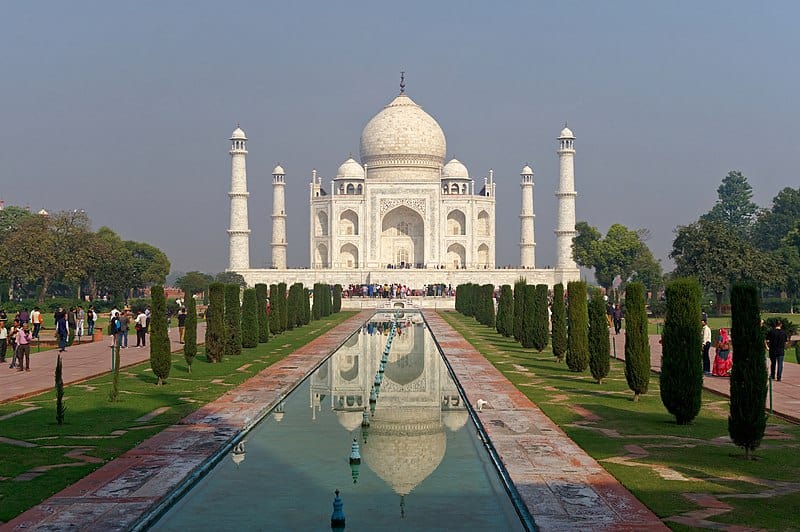
The Taj Mahal is both a symbol of Mughal artistry and lavishness. - In addition to the Taj Mahal, Shah Jahan ordered the construction of the following:
-
- Red Fort or Lal Quila (Delhi)
- Sections of the Agra Fort
- Great Mosque or Jama Masjid (Delhi)
- Pearl Mosque or Moti Masjid (Lahore)
- Shalimar Gardens (Lahore)
- Sections of the Lahore Fort (Lahore)
- Jahangir Mausoleum
- Takht-e-Taus
- Shahjahan Mosque (Thatta)
-
- The two exquisite cenotaphs inside the Taj Mahal represent the tombs of Shah Jahan and Mumtaz Mahal.
- In 1628, Shah Jahan issued an order for the construction of halls for his public audiences, especially in the capital of Agra. During his reign, court life imposed strict ceremonies focusing on the emperor. Each architectural design used in ceremonial functions was approved by him. Moreover, jewellers from Asia and Europe visited Shah Jahan’s court to sell their precious goods.
- In 1638, a year before the reconquest of Kandahar, Shah Jahan transferred the capital city of the Mughal Empire from Agra to Delhi, creating the new city of Shahjahanabad. A Jami Masjid, or great mosque, was built in Delhi and became one of the finest mosques in India. Moreover, a fortress palace called the Red Fort was also erected.
- At that time, Agra was inhabited by over 660,000 people, including foreigners. Shah Jahan decided to move the capital to the larger Delhi in order to accommodate his own household, which was roughly 65,000-strong.
Red Fort
- Another well-known example of Mughal architecture is the Red Fort in Delhi. As the Mughal Empire’s palace and administrative centre, Shah Jahan constructed it in the middle of the 17th century. Large sandstone walls, intricate gates and majestic structures, such as the Diwan-i-Am, or Hall of Public Audience, and the Diwan-i-Khas, or Hall of Private Audience, are also highlights of the fort. One of India’s most significant historical sites, the Red Fort is also a UNESCO World Heritage Site.
At the time that Shah Jahan moved the capital from Agra to Delhi, his own household comprised of:
-
- 7,000 family members, servants, clerks and officials
- 57,000 soldiers, servants and dependents
- 70 Amir/noble households
- Inside the fort was the Hall of Public Audience where members of the general public were accepted and heard.
- Shah Jahan sat on the Peacock Throne inside the hall.
- In order to finance Shah Jahan’s architectural buildings, he increased existing taxes and created new ones.
Moti Masjid
- A smaller but no less stunning example of Mughal architecture is the Moti Masjid, or Pearl Mosque. As part of the Agra Fort complex, it was constructed by Shah Jahan in the middle of the 17th century.
- The mosque’s principal prayer hall has three domes, a magnificent white marble exterior and elaborate decorations. One of India’s most stunning mosques, the Moti Masjid is a well-liked tourist destination.
- Overall, the complex features, fine artistry and use of white marble and red sandstone defined Mughal architecture under Shah Jahan. These structures continue to astonish and astound visitors worldwide and serve as a tribute to the Mughal Empire’s artistic and architectural brilliance.
The Deccan
- The Deccan region had a great deal of political and military activity under Jahangir and Shah Jahan as the Mughal Empire attempted to enlarge its domain southwards. Both emperors were eager to establish Mughal domination in the Deccan and increase their control over the territory.
- The Mughal army conducted a series of military operations in the Deccan during Jahangir’s reign in an effort to crush uprisings and establish control over the area. Shah Jahan was named the viceroy of the Deccan in 1616 by Jahangir, who charged him with upholding Mughal rule in the territory.
- In 1617, while still a prince, Khurram succeeded in conquering the Deccan Plateau. As a reward, his father Jahangir bestowed on him the title ‘Shah Jahan’, which means ‘King of the World’ in Persian. Despite the fact he proved his military skills, his stepmother Nur Jahan influenced Jahangir that Shahzada Shahryar, his son-in-law, was better than Shah Jahan. In response, Prince Khurram led a revolt against his father that failed in 1623. After being forgiven by Jahangir, Shah Jahan claimed the throne after his father’s demise in 1627. As emperor, Shah Jahan immediately eliminated possible contenders to the throne.
- During his time as viceroy, Shah Jahan led a number of successful military operations in an effort to increase Mughal dominance and subdue the Deccan sultanates. However, the Mughal court’s internal conflicts and local authorities’ hostility frequently hampered his attempts. The famed Golconda Fort near Hyderabad and the Daulatabad Fort in Maharashtra are only two of the significant forts and structures that the Mughal emperors built in the area.
Relations with the British and the struggle for the succession between Shah Jahan’s sons
- The Mughals and the British were at odds by the time Shah Jahan assumed leadership in 1628.
- With a sizable foothold in India, the East India Company had started to dominate the country’s merchants and local rulers. Initially apprehensive of the British, Shah Jahan wanted to limit their presence in India. To do this and to defend Mughal interests, he enacted stringent trade laws and placed high levies on British goods. Nevertheless, despite these initiatives, the British persisted in growing their business in India.
- By the middle of the 17th century, they had secured a large amount of control over the Indian textile trade after opening a plant in Madras.
- Throughout Shah Jahan’s reign, the Mughal-British relationship remained complex. The Mughals welcomed commercial and cultural interactions with the British at first, but they quickly grew suspicious of their growing power and attempted to advance their own interests. The myriad cultural, economic and political linkages that exist today between India and Britain are a result of this complicated relationship.
- Following Shah Jahan’s illness, who had ruled the Mughal Empire for more than 30 years, there was a battle for power and civil conflicts among Shah Jahan’s sons in the years 1657–1658. Dara Shukoh, Shah Shuja, Aurangzeb and Murad Baksh were four of Shah Jahan’s sons who each aspired to succeed their father as the ruler of India.
- Initially, Dara Shukoh, Shah Jahan’s favourite and eldest son, was thought to succeed him. His younger siblings, who were all ambitious and power-hungry, opposed his claim to the throne.
- The second son, Shah Shuja, served as the administrator of Bengal and enjoyed strong backing from the local nobles.
- The third son, Aurangzeb, served as the governor of Deccan and was in charge of a powerful army.
- Meanwhile, some of the most important nobles in the empire supported Murad Baksh, the youngest son.
- As each of the brothers fought for control of the empire, the conflict over the succession swiftly descended into a string of civil wars. The brothers’ battles for leadership of the Mughal army and the backing of the empire’s nobles were characterised by shifting alliances, betrayals and extreme violence.
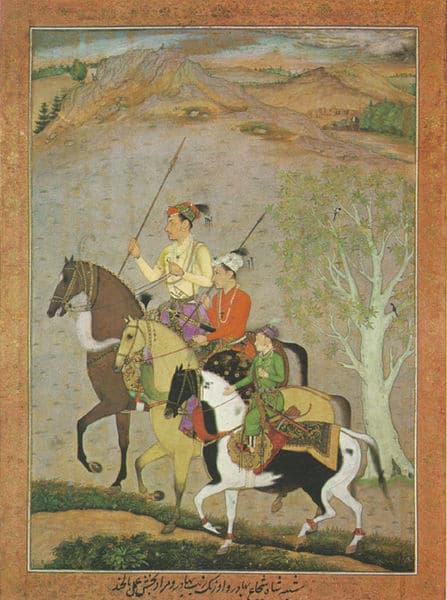
A painting of Shah Shuja, Aurangzeb and Murad Baksh in their teenage years, c.1637.
Reasons behind the war of succession during Shah Jahan’s reign:
-
- In September 1658, when Shah Jahan fell ill, many assumed that he wouldn’t recover. Rumour of his death spread, which created internal disruption and disturbance.
- As his eldest son, Shah Jahan appointed Dara as his successor. However, many members of the nobility disliked Dara due to his liberal religious views.
- While Shah Jahan was still recovering, all four princes, who were governors of various territories, desired the throne. The four princes were Dara of Punjab, Shujah of Bengal and Orissa, Aurangzeb of Deccan and Murad of Gujarat.
- Aside from the significance of kingship, the lack of definite laws of succession caused the dispute.
- After the declaration of Dara as emperor, Aurangzeb made an alliance with Murad by promising the provinces of Punjab, Sindh, Kabul and Kashmir.
- At the Battle of Bahadarpur, Shah Shuja and his army were defeated by the warriors of Dara.
- During the Battle of Dharmat, Dara’s army was defeated by the alliance between Aurangzeb and Murad.
- The combined army of Aurangzeb and Murad besieged the fort.
- In April 1659, the last battle between Aurangzeb and Dara took place in the valley of Devarai near Ajmer. Upon his defeat, Dara was sentenced to death by a court of judges. Dara’s body was brought to the streets of Delhi before finally being delivered to Humayun’s Tomb. Murad was murdered at Gwalior fort, while Shah Shuja ran away from India.
- Due to his military prowess and the backing of some of the most influential nobles in the empire, Aurangzeb ultimately prevailed in the civil wars. In 1658, he defeated Dara Shukoh in battle and had him put to death, eliminating his main challenger to the throne. Shah Shuja escaped to the Arakan kingdom in modern-day Myanmar, where the local ruler eventually killed him. Aurangzeb also put Murad Baksh to death because he believed that he posed a threat to his power.
Image Sources
- https://commons.wikimedia.org/wiki/File:Akbar,_Jahangir_and_Shah_Jahan_with_their_Ministers.jpg
- https://commons.wikimedia.org/wiki/File:Darbar_of_Shah_Jahan,_Page_from_the_Windsor_Padshahnama,_ca._1657,_The_Royal_Library,_Windsor_Castle.jpg
- https://commons.wikimedia.org/wiki/File:20191204_Taj_Mahal_Agra_0622_6533_DxO.jpg
- https://commons.wikimedia.org/wiki/File:ShujaAurganzebMurad.jpg

